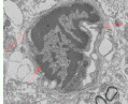(Press-News.org) University of Leicester researchers have released evidence substantiating an unexpected dual role of an important component of the immune system.
Findings by researchers at the University's Department of Infection, Immunity and Inflammation – including three PhD graduates – are published in a paper for the journal 'Medical Microbiology and Immunology'.
The paper presents significant new findings about the protein properdin – an important part of the immune system. It is a positive regulator in the alternative pathway of complement activation – which means it plays a key part in one of the body's main techniques for tackling infections and foreign bodies known as antigens.
The new findings show that in some situations a lack of properdin can actually have major benefits – while in others it can be a big disadvantage.
Using mouse models, the researchers investigated the differences in immune responses between individuals deficient in properdin and those with normal amounts of the protein.
When individuals were infected with Streptococcus pneumoniae - bacteria which can cause sepsis and pneumonia in humans – those deficient in properdin had higher survival rates than those with normal levels.
But when individuals were infected with Listeria monocytogenes – which cause an infection called listeriosis in humans – those deficient in properdin had lower levels of survival.
Cellular analysis by the researchers suggests that properdin-deficiency is likely to cause the body to use more of a type of white blood cell known as M2 macrophages – involved in tissue repair – rather than M1 macrophages, whose main role is to kill pathogens.
This allowed the researchers to conclude that properdin controls the strength of the body's immune response by affecting the role of macrophages during infection and inflammation.
Principal investigator and corresponding author, Dr Cordula Stover, Senior Lecturer in Immunology at the University's Department of Infection, Immunity and Inflammation, said: "The PhD graduates' projects together elucidate a critically instructive role of an innate immune protein, complement properdin, in shaping the inflammatory response.
"The work is the first to show that complement properdin controls the strength of immune responses by affecting humoral as well as cellular phenotypes during acute bacterial infection and ensuing inflammation."
Dr Stover also stresses that using mouse models can be very useful for understanding disease mechanisms – but there are limitations with the value of mouse models.
She said: "We are asking mice to react to human pathogens or diseases of significance for man, not mouse. Mice are genetically homogenous, unlike man, and have comparable, not identical, scope of cells and antibodies.
"To be meaningful, disease concepts need to be tested in patient samples, in order to have direct application of the research."
INFORMATION:
The PhD graduates who contributed to the research were Aline Dupont, Nur'Ain Salehen, and Fatima Mohamed (graduation years 2009, 2011, 2014).
Researchers advance understanding in immune response to infectious disease
University of Leicester researchers -- including three PhD graduates -- contribute significantly to knowledge in immunology
2014-07-16
ELSE PRESS RELEASES FROM THIS DATE:
What increases the neuronal plasticity of endogenous NSCs after focal cerebral ischemia?
2014-07-16
Stem cells can substitute the lost cells after central nervous system injury, decrease nervous tissue damage and promote neurofunctional recovery. Many brain injury models, including middle cerebral artery occlusion and traumatic brain injury models, have confirmed that neural stem cells (NSCs) can migrate from subventricular zone to injured cerebral cortex. But the mechanism underlying activation of endogenous NSCs in the ischemic brain remains unclear. Dr. Hyung-Seok Kim, Chonnam National University Medical School, Korea and his team revealed that NSCs were activated ...
Age-related changes in lateral ventricular width and periventricular white matter by DTI
2014-07-16
Ventricular enlargement has been suggested as a structural biomarker for normal aging and progression of some illnesses, such as Alzheimer's disease. However, the question of how this structural change in the brain in normal elderly affects change of white matters remains a topic of interest and concern. Dr. Sang Seok Yeo, College of Medicine, Yeungnam University, Republic of Korea, and his team performed a diffusion tensor imaging (DTI) study to investigate the question. They detected four regions of interest in the periventricular white matter of 60 normal subjected aged ...
Does intravenous transplantation of BMSCs promote neural regeneration after TBI?
2014-07-16
The brain has a low renewable capacity for self-repair and generation of new functional neurons in the treatment of trauma, inflammation and cerebral diseases. Cytotherapy is one option to regenerate central nervous system that aim at replacing the functional depleted cells due to traumatic brain injury (TBI). Bone marrow mesenchymal stem cells (BMSCs) are also considered a candidate for cytotherapy because they can differentiate into neurons/nerve cells, pass across blood-brain barrier, migrate into the injured region, secrete neurotrophic factor, and provide microenvironment ...
Cooperation among humans, a question of age
2014-07-16
This news release is available in Spanish.
The new research paper, which reports on one of the first experimental studies in the world to analyze how cooperative attitudes evolve in different age ranges, was written by the professors from the OpenSystems research group of the Department Fundamental Physics at the Universidad de Barcelona (UB), Josep Perelló and Mario Gutiérrez-Roig, Anxo Sánchez, of the Complex Systems Interdisciplinary Group (Grupo Interdisciplinar de Sistemas Complejos - GISC) of the Mathematics Department at the Universidad Carlos III de ...
Zhichan decoction increases dopaminergic neurons from transplanted NSCs in PD
2014-07-16
There is an increasing interest in Parkinson's disease (PD) treatment by increasing dopamine content and reducing dopaminergic metabolites in the brain. Xuming Yang, Shanghai Municipal Hospital of Traditional Chinese Medicine, China and his team detected dopamine content and dopaminergic metabolites in the midbrain of PD rats, which were treated by neural stem cell (NSC) transplantation and Zhichan decoction administration, using high-performance liquid chromatography, and determined global optimization of dihydroxyphenylacetic acid and homovanillic acid levels using genetic ...
Chrysophanol attenuates injury to hippocampal neurons in lead-exposed neonatal mice
2014-07-16
Previous studies have shown that chrysophanol protects against learning and memory impairments in lead-exposed adult mice. Ji Zhang, Hebei North University, China, proposed a hypothesis that chrysophanol can alleviate learning and memory dysfunction and hippocampal injury in lead-exposed neonatal mice. Results showed that chrysophanol alleviated hippocampal neuronal cytoplasmic edema, promoted mitochondrial crista fusion, significantly improved learning and memory abilities, decreased lead content in blood, brain, heart, spleen, liver and kidney, increased superoxide dismutase ...
Donating a kidney may make it difficult to change or initiate life and health insurance
2014-07-16
People who selflessly step up and donate a kidney can face insurance challenges afterwards, despite the lack of evidence that they have increased health risks. The finding, which comes from a new study published in the American Journal of Transplantation, suggests that actions by insurers may create unnecessary burden and stress for those choosing to donate and could negatively impact the likelihood of live kidney donation.
The impact of kidney donation on the ability to change or initiate health or life insurance following donation is unknown. To investigate, Dorry ...
Live kidney donors face 'pointless' insurance troubles
2014-07-16
Healthy living kidney donors often face pointless post-donation hurdles when seeking or changing health or life insurance, according to results of a new study by Johns Hopkins researchers.
"Living donors are some of the healthiest people in the United States. They're heavily screened before they're approved for donation and should be easily insurable," says study leader Dorry Segev, M.D., Ph.D., M.H.S., an associate professor of surgery and epidemiology at The Johns Hopkins University.
Under terms of the Patient Protection and Affordable Care Act (ACA), health insurance ...
New knowledge about the brain's effective bouncer
2014-07-16
Research from the University of Copenhagen is shedding new light on the brain's complicated barrier tissue. The blood-brain barrier is an effective barrier which protects the brain, but which at the same time makes it difficult to treat diseases such as Alzheimer's. In an in vitro blood-brain barrier, researchers can recreate the brain's transport processes for the benefit of the development of new pharmaceuticals for the brain. The new research findings are published in the AAPS Journal.
Ninety-five per cent of all tested pharmacological agents for treating brain disorders ...
Marijuana dependence alters the brain's response to drug paraphernalia
2014-07-16
New research from The University of Texas at Dallas demonstrates that drug paraphernalia triggers the reward areas of the brain differently in dependent and non-dependent marijuana users.
The study, published July 1 in Drug and Alcohol Dependence, demonstrated that different areas of the brain activated when dependent and non-dependent users were exposed to drug-related cues.
The 2012 National Survey on Drug Use and Health shows marijuana is the most widely used illicit drug in the United States. According to a 2013 survey from the Pew Research Center, 48 percent of ...
LAST 30 PRESS RELEASES:
Interaction of climate change and human activity and its impact on plant diversity in Qinghai-Tibet plateau
From addressing uncertainty to national strategy: an interpretation of Professor Lim Siong Guan’s views
Clinical trials on AI language model use in digestive healthcare
Scientists improve robotic visual–inertial trajectory localization accuracy using cross-modal interaction and selection techniques
Correlation between cancer cachexia and immune-related adverse events in HCC
Human adipose tissue: a new source for functional organoids
Metro lines double as freight highways during off-peak hours, Beijing study shows
Biomedical functions and applications of nanomaterials in tumor diagnosis and treatment: perspectives from ophthalmic oncology
3D imaging unveils how passivation improves perovskite solar cell performance
Enriching framework Al sites in 8-membered rings of Cu-SSZ-39 zeolite to enhance low-temperature ammonia selective catalytic reduction performance
AI-powered RNA drug development: a new frontier in therapeutics
Decoupling the HOR enhancement on PtRu: Dynamically matching interfacial water to reaction coordinates
Sulfur isn’t poisonous when it synergistically acts with phosphine in olefins hydroformylation
URI researchers uncover molecular mechanisms behind speciation in corals
Chitin based carbon aerogel offers a cleaner way to store thermal energy
Tracing hidden sources of nitrate pollution in rapidly changing rural urban landscapes
Viruses on plastic pollution may quietly accelerate the spread of antibiotic resistance
Three UH Rainbow Babies & Children’s faculty elected to prestigious American Pediatric Society
Tunnel resilience models unveiled to aid post-earthquake recovery
Satellite communication systems: the future of 5G/6G connectivity
Space computing power networks: a new frontier for satellite technologies
Experiments advance potential of protein that makes hydrogen sulfide as a therapeutic target for Alzheimer’s disease
Examining private equity’s role in fertility care
Current Molecular Pharmacology achieves a landmark: real-time CiteScore advances to 7.2
Skeletal muscle epigenetic clocks developed using postmortem tissue from an Asian population
Estimating unemployment rates with social media data
Climate policies can backfire by eroding “green” values, study finds
Too much screen time too soon? A*STAR study links infant screen exposure to brain changes and teen anxiety
Global psychiatry mourns Professor Dan Stein, visionary who transformed mental health science across Africa and beyond
KIST develops eco-friendly palladium recovery technology to safeguard resource security
[Press-News.org] Researchers advance understanding in immune response to infectious diseaseUniversity of Leicester researchers -- including three PhD graduates -- contribute significantly to knowledge in immunology


